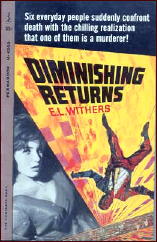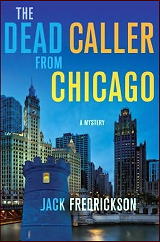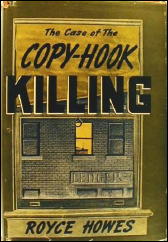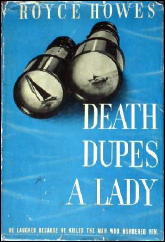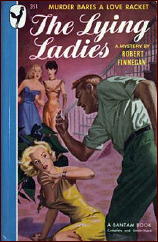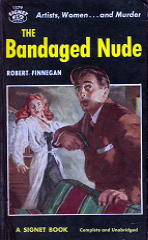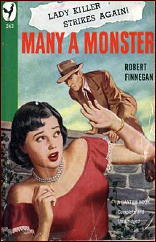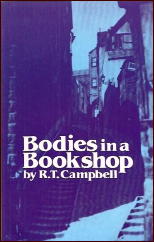TWELVE ANTHOLOGIES OF
HARD-BOILED & NOIR STORIES:
A List by Josef Hoffmann
The selected anthologies contain mostly short stories from Black Mask and similar pulp magazines. Several stories are newer. The books are especially recommended to readers who want to get a representative overview of this kind of crime fiction without investing the time, money and labour to obtain the original magazines.
These books are also of interest for collectors who want to take care of their gems and prefer to read the old texts in new books. But my list is not complete. More such anthologies have been published than I have selected.
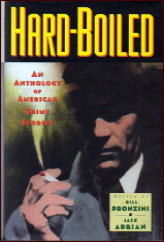
Adrian, Jack & Pronzini, Bill – Hard-Boiled: An Anthology of American Crime Stories, Oxford University Press, 1995.
This is a de luxe edition of an anthology, not only concerning the contents but also the quality of the paper and the book cover. The long and brilliant introduction tries to define hard-boiled crime fiction. Then follow 36 stories from the 1920s to the 1990s. There are the big stars like Hammett, Chandler, W. R. Burnett, James M. Cain, Chester Himes, Mickey Spillane, Jim Thompson etc., but also forgotten writers like William Cole, Benjamin Appel, Jonathan Craig, Helen Nielsen and others.
Among the contemporary authors you find Elmore Leonard, Margaret Maron, James Ellroy, Andrew Vachss, Faye Kellerman. One of the finest stories is contributed by James M. Reasoner, a story in a slightly depressive mood. Every story is introduced by an informative note, so the book is also a reference work. As far as I can remember it was nominated for an Edgar award, which is no surprise for any reader of this anthology.

Ellroy, James & Penzler, Otto – The Best American Noir of the Century, Houghton Mifflin Harcourt, 2010.
This book of 731 pages contains more stories of contemporary writers than of old ones. There is no text of Hammett, Chandler, Horace McCoy and Paul Cain. But there are stories by MacKinlay Kantor (“Gun Crazy”), Dorothy B. Hughes, David Goodis, Charles Beaumont (“The Hunger”), Jim Thompson, Patricia Highsmith and others.
Among contemporary writers you find James Ellroy, James Lee Burke, James Crumley, Jeffery Deaver, Joyce Carol Oates, Lawrence Block, Dennis Lehane, Andrew Klavan, Elmore Leonard, Ed Gorman and other writers which are not so well-known. The most recent story was published in 2007: “Missing the Morning Bus,” by Lorenzo Carcaterra. The book starts with a short foreword by Penzler and an even shorter introduction by Ellroy. Informative notes on the authors are added to each story. It is good value for your money.
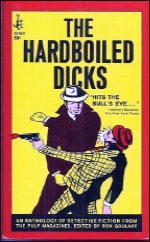
Goulart, Ron – The Hardboiled Dicks. An Anthology of Detective Fiction from the American Pulp Magazines, T. V. Boardman 1967.
Goulart’s book contains stories by Norbert Davis, John K. Butler, Frederick Nebel, Raoul Whitfield, Frank Gruber, Richard Sale, Lester Dent and Erle Stanley Gardner. Four were published in Black Mask, the rest in other pulp magazines.
Goulart’s introduction and his introducing notes for each story are rather short, also the informal reading list at the end of the book. As a hardcover edition of the Boardman’s “American Bloodhound” series with a jacket design by the legendary Denis McLoughlin, this book is a much-sought collector’s item.

Jakubowski, Maxim – The Mammoth Book of Pulp Fiction, Robinson 1996.
Jakubowski is not only an editor of crime fiction but also a writer of erotic crime novels and the owner of the London bookshop Murder One, which unfortunately does not exist anymore. Jakubowski’s anthology is different from other pulp collections on my list because he presents above all short fiction of Gold Medal Book authors like Charles Williams, John D. MacDonald, Gil Brewer, Jim Thompson, David Goodis, Day Keene, Bruno Fischer etc. and also more recent stories by Charles Willeford, Lawrence Block, Max Allan Collins, Bill Pronzini, John Lutz, Joe Gores, Harlan Ellison, Donald E. Westlake etc. You see this book’s understanding of pulp fiction is rather broad.
After the success of the this anthology Jakubowski edited a volume with a similar receipt. There are some stories of the old pulp magazines of the Black Mask days by Gardner, Whitfield, Gruber, Steve Fisher, Norbert Davis etc. mixed with newer material by Michael Guinzburg, Mark Timlin, Marcia Muller, Joe R. Lansdale, Ed Gorman etc. This second anthology is The Mammoth Book of Pulp Action, Carroll & Graf Publishers, 2001, in the US.
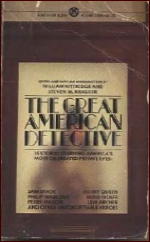
Kittredge, William & Krauzer, Steven M. – The Great American Detective: 15 Stories Starring America’s Most Celebrated Private Eyes, New American Library, 1978.
This is the only anthology on my list which does not contain exclusive hard-boiled and noir stories. One of the two Black Mask stories is a detective tale about Race Williams by Carroll John Daly. Other hard-boiled stories feature Sam Spade (Hammett), Philip Marlowe (Chandler), Dan Turner (Rober Leslie Bellem), Michael Shayne (Brett Halliday), Lew Archer (Ross Macdonald) and Mack Bolan, the Executioner (Don Pendleton).
The second Black Mask story is contributed by Cornell Woolrich: “Angel Face.” But you find also tales of famous detectives like Nick Carter, The Shadow, Ellery Queen, Nero Wolfe, Perry Mason and others which are not hard-boiled. The book has a very interesting introduction of 24 pages by the editors, contains short notes before each story and some suggestions for further reading in the final chapter.

Nolan, William F. – The Black Mask Boys: Masters in the Hard-Boiled School of Detective Fiction, The Mysterious Press, 1987.
The book begins with a short history of Black Mask magazine. Then comes the first hard-boiled detective tale ever printed: “Three Gun Terry,” by Carroll John Daily. It is followed by the most bloodthirsty story which Hammett has ever written: “Bodies Piled Up.”
The other stories are also written by big names: Erle Stanley Gardner, Raoul Whitfield, Frederick Nebel, Horace McCoy, Paul Cain and Raymond Chandler. Each story is combined with a lot of information about the author and his writing for Black Mask. At the end is a checklist of mystery-detective-crime pulp magazines.
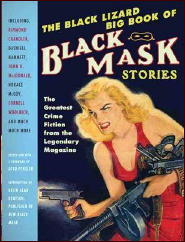
Penzler, Otto – The Black Lizard Big Book of Black Mask Stories. Vintage Books, 2010.
This voluminous book has 1116 pages. Containing 53 stories this anthology “is the biggest and most comprehensive collection of pulp crime fiction ever published,” writes Penzler in his foreword. The introduction is by Keith Alan Deutsch, copyright owner of Black Mask Magazine.
The collection includes the original version of Hammett’s The Maltese Falcon. Lester Dent’s story “Luck” is in print for the first time. Besides the “usual suspects” there is a lot of reading material you would not expect: stories by Stewart Sterling, Talmadge Powell, Charles G. Booth, Richard Sale, Katherine Brocklebank, Thomas Walsh, Dwight V. Babcock, Cleve F. Adams, Day Keene, W. T. Ballard, Hugh B. Cave, C. M. Kornbluth, Cornell Woolrich and many others. There are also several names I have never heard of. All in all very good value for the price of $25.00.
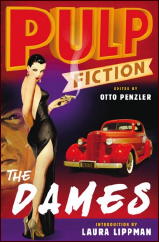
Penzler, Otto – Pulp Fiction: The Dames, Quercus 2008.
This is one of three anthologies of pulp fiction edited by Penzler in 2008. The other two books concern “Villains” and “Crimefighters.” The “Dames” anthology is for me the most interesting book. It is introduced by crime writer Laura Lippman.
Besides the star authors Hammett, Chandler, Woolrich one can read fine pulp stories by writers like Eric Taylor, Randolph Barr, Robert Reeves, Roger Torrey, Eugene Thomas, T. T. Flynn and some really unknown pulp fiction writers, altogether 23 stories. At the beginning of every story is a short note about the author and his text. So you get a lot of information about pulp fiction. There is also a comic strip “Sally The Sleuth” by Adolphe Barreaux.

Pronzini, Bill – The Arbor House Treasury of Detective and Mystery Stories from the Great Pulps, Arbor House, 1983.
The anthology contains 15 stories and an informative introduction about the history of the pulps. Besides the big names like Hammett, Horace McCoy, Fredric Brown, Cornell Woolrich, John D. MacDonald (twice) etc. there are stories by rather unknown writers like Dane Gregory, D. L. Champion.
A highlight is “Holocaust House,” by Norbert Davis, the first story about private eye Doan and his dog Carstairs. Each story is combined with an informative note. So the reader can learn a lot about pulps.

Ruhm, Herbert – The Hard-Boiled Detective. Stories from Black Mask Magazine 1920-1951, Vintage Books, 1977.
The book contains 14 stories and a lucid introduction of 28 pages. Besides the big names there are tales by not so well-known or meanwhile forgotten writers as Norbert Davis, Lester Dent, George Harmon Coxe, Merle Constiner, Curt Hamlin, Paul W. Fairman, Bruno Fischer and the humorous William Brandon.
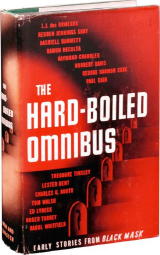
Shaw, Joseph T. – The Hard-Boiled Omnibus: Early Stories from Black Mask, Simon & Schuster, 1946; Pocket Books, 1952.
The book is introduced by the legendary Black Mask editor Shaw himself, the man who shaped the magazine’s hard-boiled style more than any other editor. Especially he promoted Hammett and encouraged other writers to follow his literary model.
The hardcover edition contains 15 stories, the paperback only 12. Besides well-known stories by Hammett, Chandler, Cain, Dent and Norbert Davis’s “Red Goose,” there are rather unknown tales by Reuben Jennings Shay, Ed Lybeck, Roger Torrey, Theodore Tinsley and others. A historical milestone.
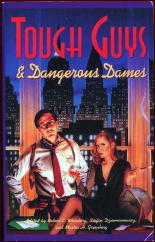
Weinberg, Robert E., Dziemianowicz, Stefan & Greenberg, Martin H. – Tough Guys & Dangerous Dames, Barnes & Noble Books, 1993.
The 24 pulp stories comprehend well-known authors like Chandler, Whitfield, Dent, Gardner, Paul Cain, John D. MacDonald as well as forgotten or unknown writers like Fred MacIsaac, Paul Chadwick, Donald Wandrei and others. The story by Norbert Davis, “Murder in the Red,” is not often reprinted.
Unusual for an anthology of this kind are also names like Fritz Leiber, Leigh Brackett and Robert Bloch. The reader gets some useful information about the contributors from the introduction by Dziemianowicz.
